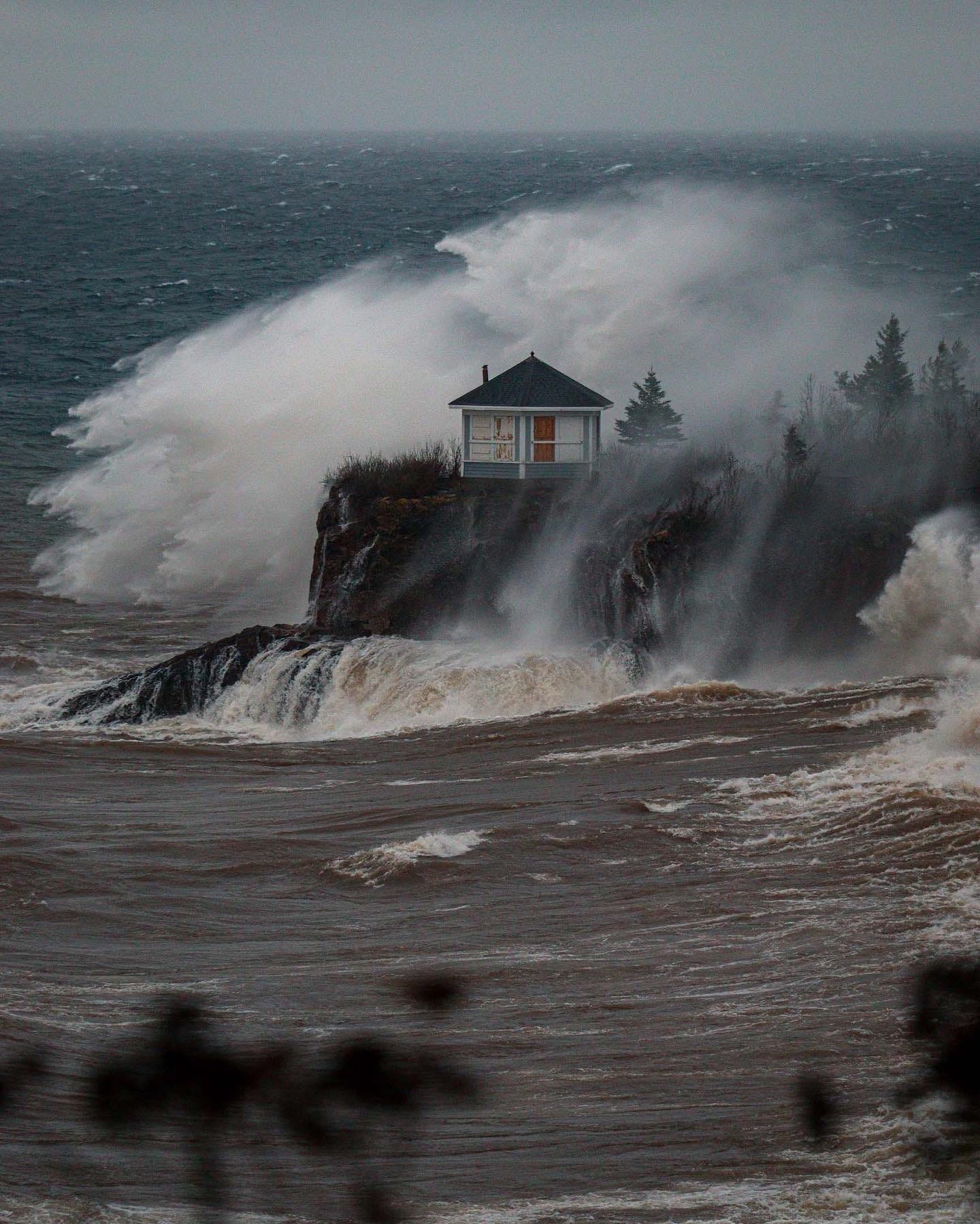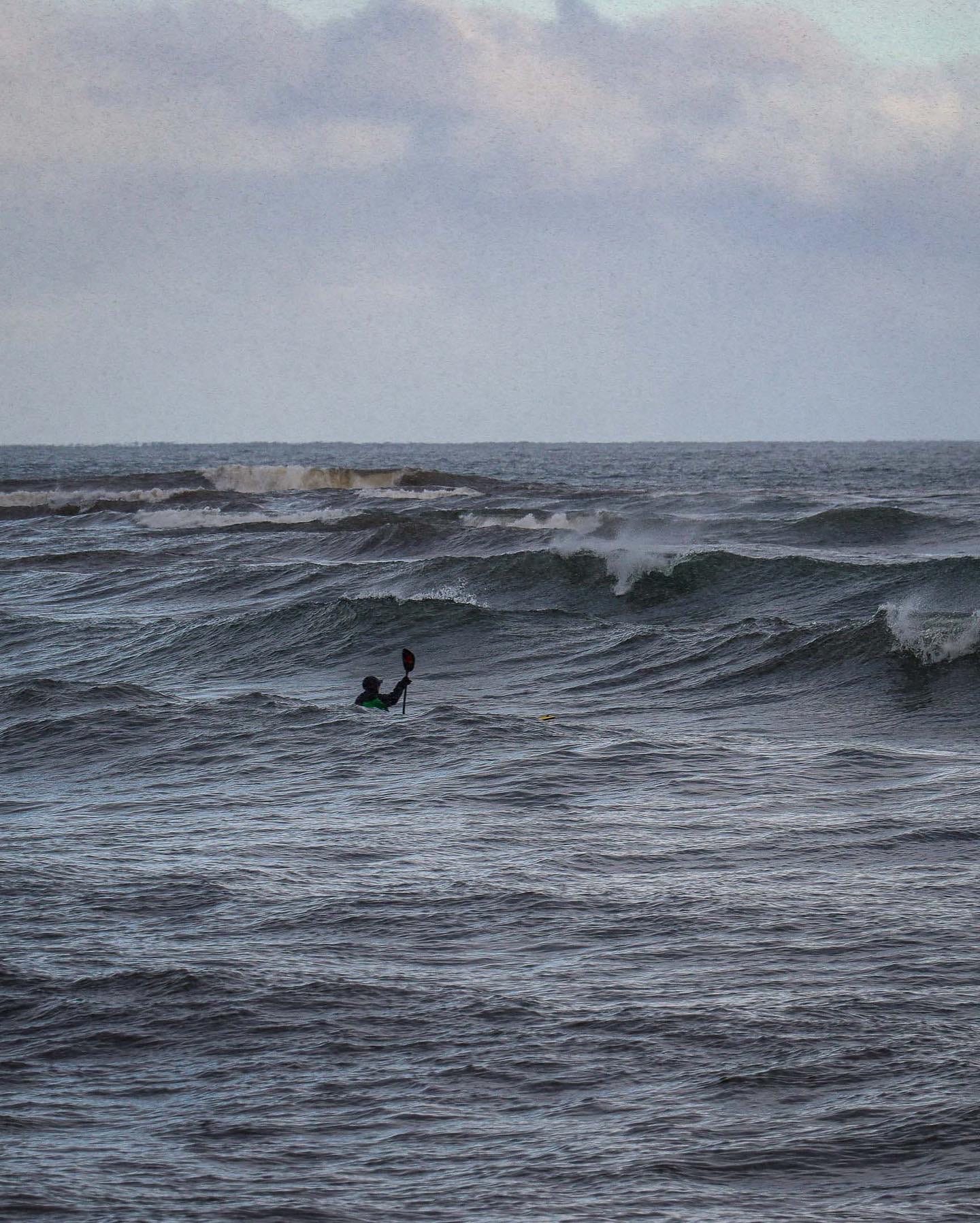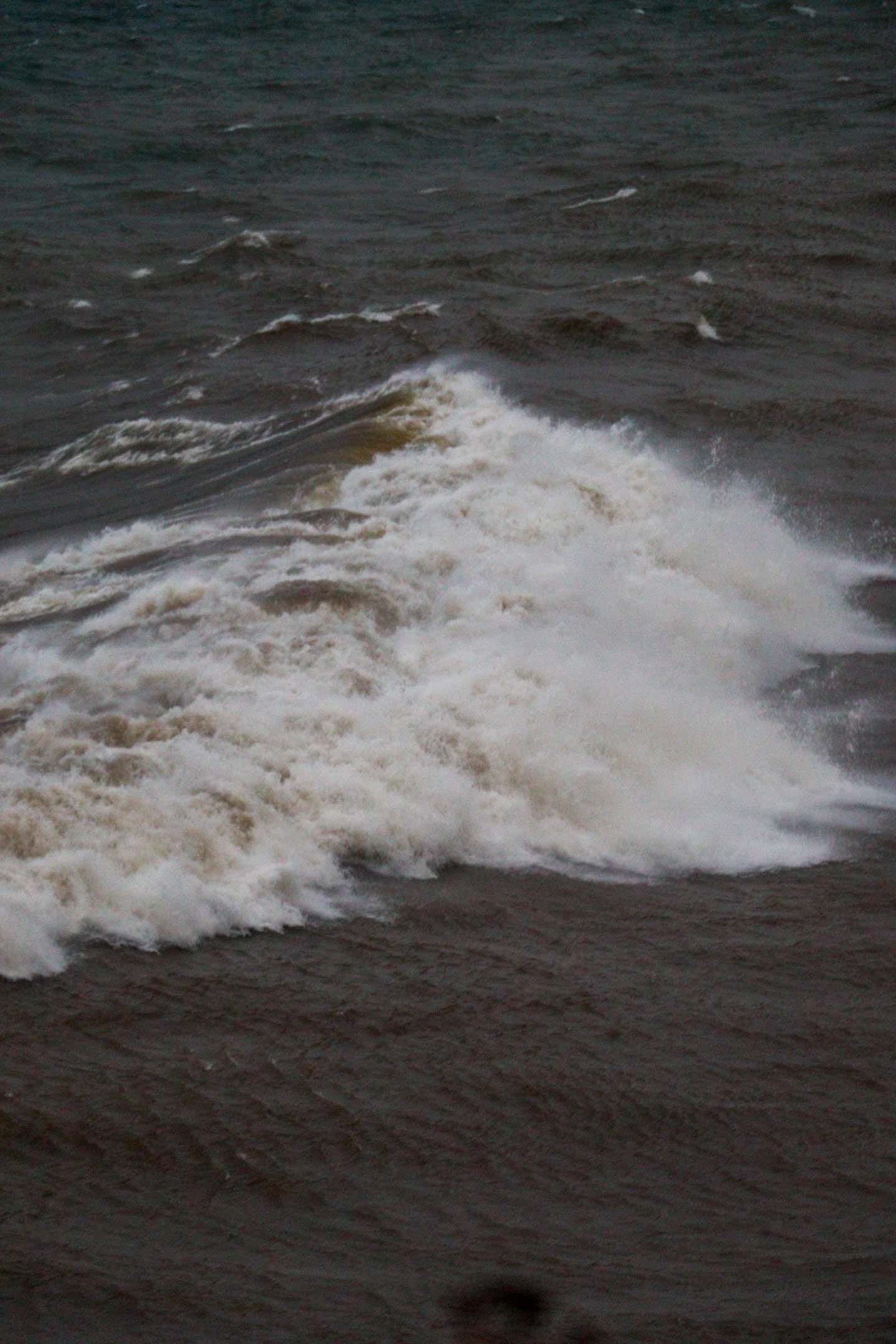Shipwreck Tales from the Great Lakes (3/5)
the wreck of the Hanna, and more recent updates from the Great Lakes Basin
This past Thursday (11/10/22), the southwestern corner of Lake Superior got slammed with a Nor’easter leading to some pretty dramatic scenery and some pretty darn big waves. Fitzgerald big? White Hurricane big? Not quite. Damp gazebo big?
Oh you betcha.
For reference, at 5’3” I come to about the white line on the windows of the gazebo. The gazebo itself is on private property off a private road and inaccessible to the public, but this viewpoint can be found off the Gitchi-Gami State Trail.
Andy, who knows the area well, thinks this cliff is probably a good 30 ft tall. I’m pretty sure the gazebo is about 15ft. By that logic, I’d put these waves at around 15-17ft. The forecast called for just about exactly that, with occasional 21 footers. It’s hard to gauge wave size from above, and even harder to get an accurate guess from a photo. It’s also hard to say for sure because a shallow bottom forces the body of a wave up vertically, causing waves to steepen and break as they approach shore.
Honestly, wave size is a little irrelevant. Without buoys to measure, observations vary wildly from person to person. From above or from shore, people tend to understate wave size. From the water? People tend to overstate.
I’m thinking of the person who told me they capsized in 4 foot waves, when upon checking the local forecast it was likely closer to one foot. Or of the person on a sea kayaking tour who asked if we were in roughly two foot waves, and I explained that they were closer to a half foot— two foot would be coming up near your shoulder. Needless to say, I did not get in my kayak to get a better look at the size of the waves last Thursday.
I saved that for Saturday, when there was still decent leftover swell. I’m not remotely an “avid” sea kayak surfer, and most of the sea kayakers went out Friday when the waves were still pretty big. Saturday I was big time off my game, left half my gear at home on accident and Andy graciously went back to grab it for me, then I got off to a literally rocky start when I slipped on a rock and got soaked up to my waist before even setting foot in a kayak. When I bailed early, I went to shoulder carry my boat in front of a few tourists like the hot shot I think I am, they said something to me and I turned to answer and whacked the stern of my boat on a tree.
Pictured is Zack, taken after I had given up and changed into dry clothes and pulled out the camera instead.
While guessing at wave heights from a cliff above is a bit of a fool’s errand, there are several useful landmarks to gauge wave heights during severe storms on the Lake. For example, during the storm that sank the Edmund Fitzgerald the captain of the nearby ship the Anderson reported waves cresting over his pilothouse1, clocking the waves at at least 35 feet.
The 15 ft waves I saw this past November 10th don’t even begin to compare to what’s been seen in the worst of Great Lakes Storms. The two monster waves that crested over the Anderson and likely engulfed the Fitzgerald (the timing between when those two waves passed under the Anderson and all contact was lost with the Fitzgerald is uncanny) would have been more than double the height of the waves pictured above.
Which brings us to Lake Huron, November 1913. While generally Lake Superior gets the most notoriety for big waves and shipwrecks, during the White Hurricane of 1913 Lake Huron was a primary battleground2.
If you haven’t already yet or need a refresher on the Great Lakes White Hurricane of 1913, check out parts one and two of this series!
According to Brown in White Hurricane, “Winds on the Great Lakes did not simply increase; they exploded out of the North at sustained speeds of 70 miles per hour or more. The worst of these blasts roared down the length of Lake Huron towards its closed southern end, where so many ships were running for shelter,”( Brown 100).
Note that in the storm that sank the Fitzgerald, winds were gusting to 70-80 miles per hour, hurricane force, but general consensus is that sustained speeds were around 50 knots. During the White Hurricane, sustained wind speeds reached 70 miles per hour and higher. Wind gusts of 90 miles per hour were recorded. This storm wrecked unprecedented levels of havoc on the Great Lakes.
On Lake Huron, north winds are perfectly situated to rip down 200 miles down the length of the Lake towards the shallow shoals at the mouth of the St. Clair River. In November 1913, many ships had headed down Lake Huron toward the St. Clair River hoping to find protection— on Lake Huron alone the White Hurricane took 199 lives in its worst four hours sinking eight large commercial ships and stranding nine others.
On Sunday evening during the White Hurricane of 1913, the steamer Howard M. Hanna found itself in these conditions, rolling in massive waves and drifting despite the captain and crew’s best efforts into a reef near the Port Austin Lighthouse. With half the crew in the bow and half in the stern, the Hanna was trapped with no escape in sight.
Within eyesight of shore, the Point Aux Barques Lifesaving Station launched a lifeboat in attempt to reach the Hanna, which resulted in the surfboat3 pounded into the sand and damaged. After hours patching the surfboat, the rescue mission launched again in the early morning Tuesday, just as nine men from the Hanna salvaged a lifeboat and began rowing to shore to seek more help.
Meanwhile aboard the Hanna, Sadie Black walked barefoot through waist deep water cooking and bringing coffee to her fellow survivors and nursing the injured and sick. According to boatswain Arthur Jacobs (Brown, 172), “Mrs. Black was the only cool one on the vessel after it went into the reef”.
Black was so notable collected and cool that her “cool” makes the chorus of Russ Franzen’s song “The Hero Sadie Black”.
(The Edmund Fitzgerald isn’t the only Great Lakes wreck to have a song, and this one has a happy ending! Russ Franzen is Lake Singer on YouTube and he writes songs about Great Lakes History. He is also on Spotify.)
When the surfboat finally reached the wreckage of the Hanna the rescue boat was leaking and required continuous bailing. Black refused to board the surfboat before the men as was customary at the time, and instead waited her turn. Jacobs commented in the Cleveland Plain Dealer that she had “all the earmarks of a real sailor”.
By the time they reached shore as a result of her continuous wading through freezing water to administer care to her fellow shipmates, Black was hypothermic and the crew members pooled money to pay to get her to a hospital quickly.
Ultimately, everyone aboard the Hanna survives. Sadie Black gets the best of all possible fates for historical heroes; she disappears from the historical record back into her own life. Her name and heroics beyond the original news report go untold until Brown resurrects her in 2002 in his book, then Russ Franzen writes a song for her in 2014, and now here I am, telling her story to you now in 2022.
After the storm, it took nearly a full week for Lake Huron to calm.
Next week, I’ll cover the absolutely horrific story of the Regina and the Charles S Price, two intermingled shipwreck tales with stomach churning endings.
If you’ve enjoyed reading about these shipwrecks and are looking for a more detailed account or a great early winter read, check out White Hurricane: A Great Lakes November Gale and America’s Deadliest Maritime Disaster.
This article series prompted my second reading of the book and it’s even more interesting than the first time. You can find this book both online or request it from your local bookstore and support local!
I was able to find this ‘fact’ in Lake Superior Magazine but could not find that exact phrasing, ‘waves cresting over the pilothouse’ in any official reports.
A surfboat is just the name for the US Coast Guard Rescue Boats. If you want to kill like… five hours or so, check out USCG training videos on YouTube. Modern surfboats (perhaps obviously) look differently from a 1913 surfboat.








